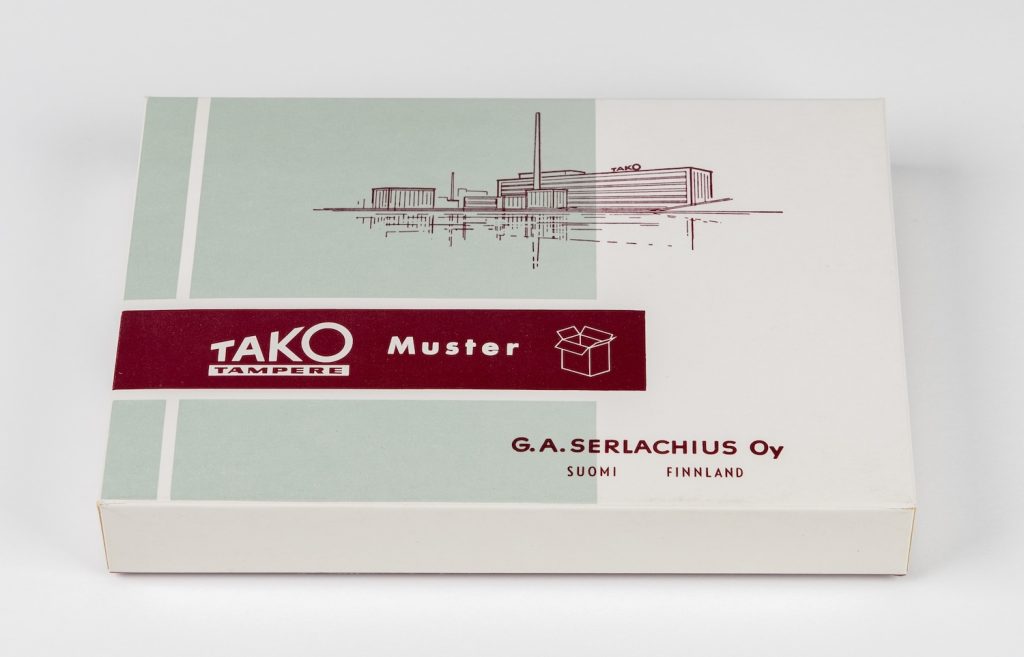A sample package manufactured by TAKO
APRIL 2024
The smooth-surfaced TAKO Tampere box boasts beautiful colours and stylish printing. On the front of the box is the silhouette of the factory located in the centre of Tampere.
On the other side of the box is printed the text: “TAKO Chromokarton, gedruckt und lackiert” (printed and varnished chromo cardboard). An item found in the Serlachius collections was produced as a sample for the German-speaking markets of G. A. Serlachius Ltd’s TAKO corrugated board factory.
Fredrik Idestam founded a wood pulp mill, Trädsliperi Aktiebolaget i Tammerfors, at the lower reaches of the Tammerkoski river in 1865. In 1877 the new company was named Tammerfors Takfiltfabriks Aktiebolag. The factory produced, among other things, raw paperboard, roofing felt, and cardboard that was used as basis under wallpaper.
In 1911, the factory began manufacturing corrugated cardboard, the first in Finland. In the early 1930s, the renovated factory started producing folding boxboard, kraft paperboard, building paperboard, boxes, and their raw materials. The company, which changed its name to TAKO Ltd, was merged with G. A. Serlachius Ltd in 1940 – just over 20 years after GAS acquired the majority of the factory’s shares.
In the late 1950s to early 1960s, TAKO’s production was divided into two parts: the production of cardboard and the processing of cardboard into transport and sales packaging. The main products of the factory were folding boxboard, chromo cardboard, as well as brown corrugated and kraft paperboard. The company followed technical developments in the United States and began producing chromo cardboard, the first in the Nordic countries, in 1957.
Folding boxboard was used in the production of consumer packaging. Chromo cardboard, or coated folding boxboard, quickly became a sought-after product in the global market, especially due to its excellent printing properties. The factory had three cardboard machines, two of which were equipped with coating and varnishing devices in the late 1950s to early 1960s. In 1965, the third machine was also upgraded by renewing the wet end, enlarging the drying section, and installing the equipment needed for chromo cardboard production.
The raw materials for TAKO’s cardboard were pulp produced at its own wood pulp mill, sulphite pulp produced at the Mänttä mill, and wastepaper, of which TAKO was one of the largest users in Finland. In 1964, TAKO’s production was over 90,000 tons of cardboard per year, of which 75 percent was exported. TAKO’s market position as a chromo cardboard manufacturer remained strong in Europe throughout the 1960s. From the sawmill founded by Idestam with seven employees, it had grown into a production facility with over a thousand employees in a hundred years.
Katri Tolonen
Curator
Sources:
Bo Ahlskog & Seppo Katajamäki: “Tako and the development of folding cardboard production 1950–2010”. www.puunjalostusinsinöörit.fi
G. A. Serlachius Ltd archive, Tako, Serlachius Museums.
Kari, Risto (1990): 125 years of TAKO. Metsä-Serla, Takon Kartonkitehdas.




